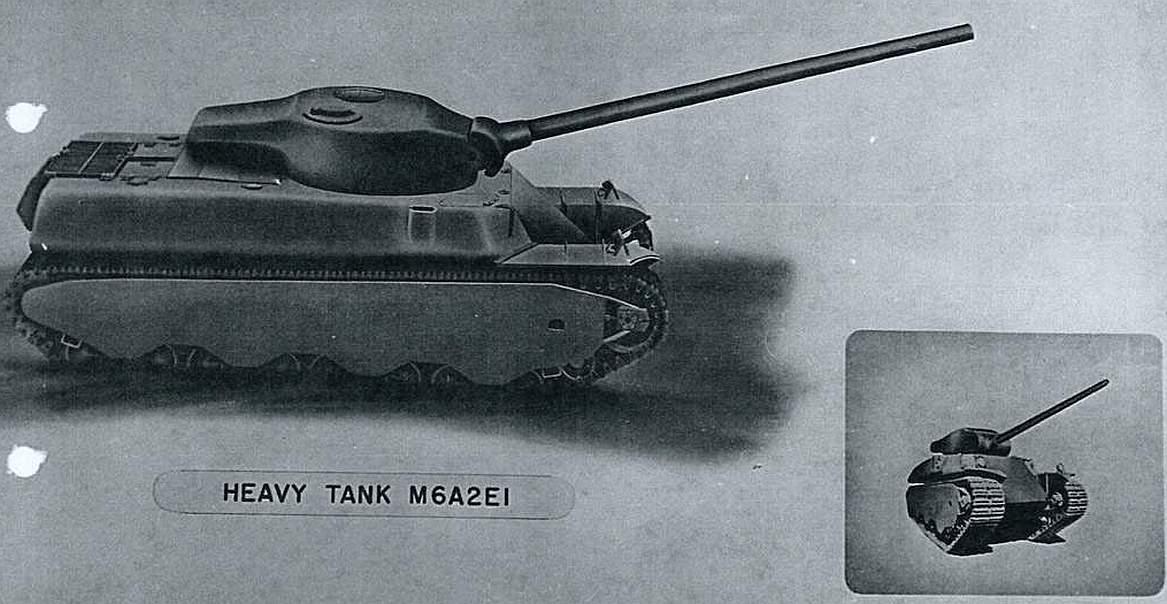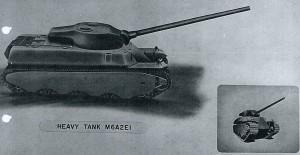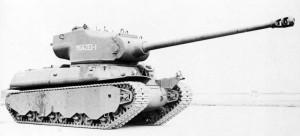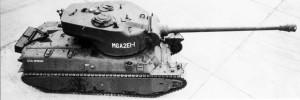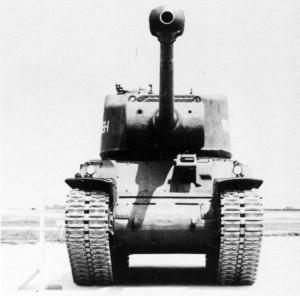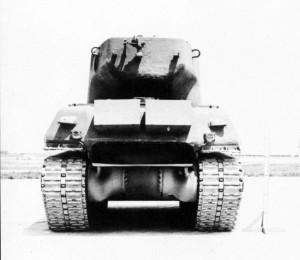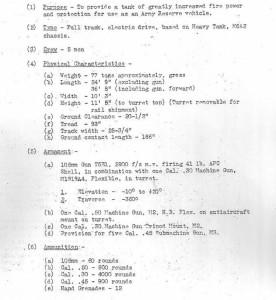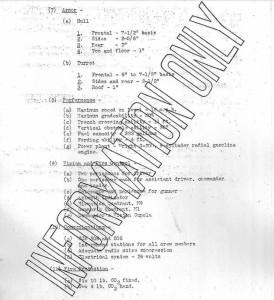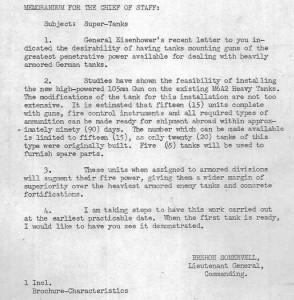World of Tanks M6A2E1 the origin of myth
In World of Tanks there is a unique tank, which has obsessed many players. It’s the M6A2E1, nicknamed “Goose” or Alien (for the turret, of course). When this tank was modeled, for unknown reasons, the hull of a M6 was chosen. So, the birth of a new redesigned model of M6A2E1 aroused an interest quite understandable. So which will tank appear soon in the game? Many players point to pictures in which the M6A2E1 had the hull of M6A2 Heavy Tank. The history of M6A2E1 began at the end of July 1944. The Battle of Normandy was in progress, the Allies had gradually eroded the Germans. The Americans had not yet met the Tiger, but in mid-July 1944 the 503 s.Pz.Abt, armed with heavy tanks Pz.Kpfw.Tiger Ausf.B, fought against the Allies.
In World of Tanks ve è un carro unico, che ha ossessionato i giocatori. Si tratta dell’M6A2E1, soprannominato “Oca” e all’estero Alien (per la torretta, ovviamente). Nel momento in cui è stato modellato, con motivazioni sconosciute, venne scelto per motivi incomprensibili lo scafo dell’M6. Così la nascita di un nuovo modello riprogettato di M6A2E1 ha suscitato un interesse abbastanza comprensibile. Quindi, che carro apparirà presto in gioco? Molti indicano le foto in cui l’M6A2E1 sfoggiava lo scafo abbastanza comune dell’M6A2 Heavy Tank. La storia dell’M6A2E1 è iniziata alla fine del luglio 1944. La battaglia di Normandia era in svolgimento, gli Alleati gradualmente avevano messo in difficoltà i tedeschi. Gli Americani non avevano ancora incontrato i Tiger. A metà luglio 1944 la 503 s.Pz.Abt, armata con carri armati pesanti Pz.Kpfw.Tiger Ausf.B s socntrò con gli Alleati.
It became clear soon that the US did not have adequate vehicles to deal with the German Tiger II. On 28 July 1944, the US Army Department was looking for ideas on how you could beat the new German tanks. Us Army gave the task to General Electric to try to install a 105 mm gun in the tank T5E1 M6. The gun from the beginning had been developed for the T28, which had been developed on the hull of M6 since autumn 1943. It is noted that the initial project of M6A2E1 Heavy Tank was very different from what it was for real. Despite the fact that the tank was designed primarily as an anti-tank weapon, its creators disposed a good armored hull. The front of M6A1 was replaced by a hull without display devices, coaxial machine guns and other stuff. This front reached so the thickness of 190mm and had rational corners. Visibility for the driver was significantly decreased, but for a heavy armored tank the USA tank crewmen would tolerate this inconvenience. Moreover, in the original design, the tower had to be enlarged to accommodate the gun and provide an adequate counterweight during the shoot.
Divenne subito chiaro che gli USA non avevano mezzi adeguati per affrontare i Tiger II. Il 28 luglio 1944 il Dipartimento Militare Americano cercava idee su come si poteva battere il nuovo carro armato tedesco. Si diede il compito alla General Electric di provare ad installare un cannone da 105 mm nel carro T5E1 M6. Il Cannone fin dall’inizio era stato sviluppato per il T28 , che era stato sviluppato in base all’M6 dall’autunno 1943. Si precisa che il progetto iniziale dell’M6A2E1 Heavy Tank era molto diverso da quanto venne stato realizzato in metallo. Nonostante il fatto che la macchina fosse progettata principalmente come un anticarro, i suoi creatori avevano disposto delle protezioni adeguate. La parte frontale dell’M6A1 venne sostituita da una struttura priva di dispositivi di visualizzazione, mitragliatrici coassiali e altre cose. Questa parte frontale raggiunse così lo spessore di 190mm e angoli razionali. La visibilità dal guidatore era significativamente diminuita, i carristi americani avrebbero tollerato questo inconveniente. Inoltre, nel progetto originale la torre doveva essere ingrandita per ospitare il cannone e fornire un contrappeso adeguato in fase di sparo.
According to documents, the Genaral Electrics received an urgent change of order for 15 M6 Heavy Tank. The feautures of M6A2E1 had to be the following: the tank was a hypertrophic Sherman Firefly, slow but well-armored, and armed with a cannon that could successfully penetrate almost anything that the Germans built. On August 1, the company Wellman received an order for 15 towers and for another 3 M6A2E1. In general, however, from 18 August 1944, the project M6A2E1 was gradually abandoned. The Department of the Armed Forces chose to devote himself to the construction of heavy tanks T29 and T30. As a result 22 August 1944 the construction of 15 M6A2E1 was canceled. But not quite – two prototypes were used to test the heavy weapons of the T29. And the photos of M6A2E1 were about these two prototypes without sloped frontal armor. It was assumed that the renovation of the “nose” was part of a second project, but for economic reasons the idea was shelved. Why pay for a tank used only as a test? But the projects and original drawings of the tank still remain and it looked somewhat different than the two prototypes used in the test ..
Secondo i documenti, la Genaral Electrics ricevette un ordine di modifica urgente di 15 M6 Heavy Tank. Le caraatteristiche dell’M6A2E1 dovevano essere le seguenti: si trasformava il mezzo in un ipertrofico Sherman Firefly, lento ma ben corazzato, e con un cannone in grado di penetrare con successo quasi tutto ciò che i tedeschi costruirono. Il 1 agosto l’azienda Wellman ricevette un ordine per 15 torrette, per altri 3 M6A2E1. In generale, però, dal 18 agosto 1944 il progetto M6A2E1 venne progressivamente abbandonato. Il Dipartimento delle Forze Armate preferì dedicarsi alla costruzione de carri armati pesanti T29 e T30 . Come risultato il 22 agosto 1944 la costruzione dei 15 M6A2E1 venne annullata. Ma non del tutto – due prototipi vennero utilizzati per testare le armi pesanti del carro T29. E le foto dell’M6A2E1 sono relative a questi due prototipi. In realtà questi due prototipi erano privi di corazza frontale inclinata. Si è supposto che il rifacimento del “naso” facesse parte di un secondo il progetto, ma per ragioni economiche l’idea venne accantonata. Perché spendere per un carro usato solo come un banco di prova? Tuttavia rimangono i progetti e i disegni originari del carro, che appariva in parte diverso rispetto ai due prototipi utilizzati nei test.
Fonti: NARA RP Hunnicutt
